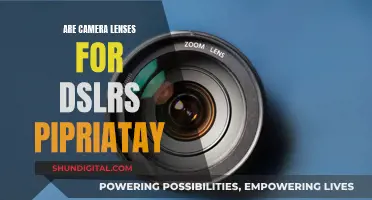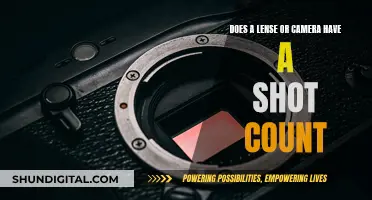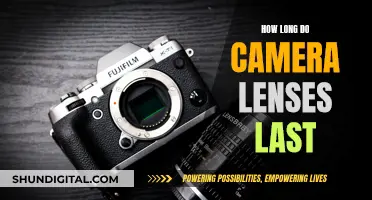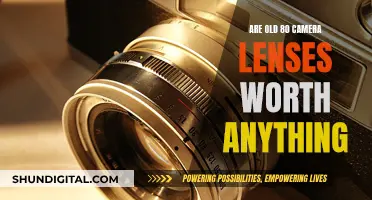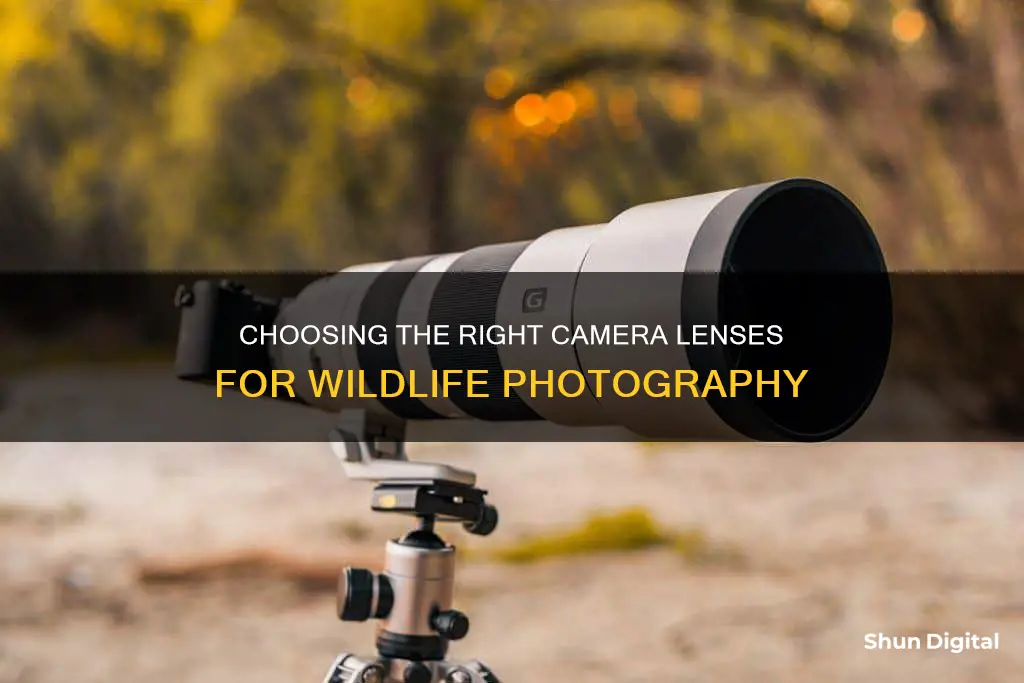
Wildlife photography is a challenging genre that requires the right lens to get the perfect shot. The type of lens you need depends on the kind of wildlife photography you want to do.
If you're photographing small creatures like insects or birds, a macro lens is a good choice. Macro lenses allow for extreme close-ups, capturing the minute details that would be missed by other types of lenses.
For larger, distant wildlife, such as deer in a field or birds in flight, a telephoto or super telephoto lens is more suitable. These lenses have long focal lengths, letting you capture detailed images from a distance without disturbing the animals.
If your photography involves subjects that are unpredictable in their movement and distance, such as birds in flight, a zoom lens with a broad range of focal lengths will be ideal. Zoom lenses let you adapt swiftly to changing situations without needing to swap lenses.
If you're hiking or tracking in the wilderness, a lightweight prime lens might be best. These lenses are easy to carry for extended periods and often provide superior image quality.
For those who photograph wildlife in low-light environments, a lens with a larger maximum aperture is essential. These lenses let in more light, facilitating better shots in dim conditions.
Lastly, if you frequent rugged environments, a lens with good durability and weather sealing is a must.
The best lens depends entirely on your individual needs as a photographer. Take the time to research and consider all available options before investing in a wildlife photography lens.
What You'll Learn
- Telephoto lenses are ideal for wildlife photography as they allow you to get close-up shots of animals without disturbing them
- Zoom lenses offer flexibility with a range of focal lengths, but prime lenses tend to be more expensive and sharper
- A teleconverter can be used to extend the reach of a lens, but it may reduce image sharpness
- Lenses with larger maximum apertures are ideal for low-light conditions and capturing fast-moving animals
- When choosing a lens, consider factors such as autofocus performance, lens reach, image stabilization, weight, and compatibility with your camera body?

Telephoto lenses are ideal for wildlife photography as they allow you to get close-up shots of animals without disturbing them
Telephoto lenses come in a range of focal lengths, typically starting at 100mm and going up to 800mm. The longer the focal length, the greater the magnification and the closer you can get to your subject. For example, a 600mm lens is considered the "gold standard" for bird photography, allowing photographers to capture intricate details of birds in flight.
When choosing a telephoto lens for wildlife photography, it's important to consider factors such as aperture, image stabilization, weight, and compatibility with your camera body. A wider aperture (e.g., f/2.8 or f/4) allows more light to enter the lens, resulting in brighter and clearer photos, especially in low-light conditions. Image stabilization helps reduce blur when shooting handheld, which is common in wildlife photography. Weight is also a crucial factor, as heavier lenses can be more challenging to carry for extended periods.
Additionally, consider the type of wildlife you plan to photograph. For smaller creatures like insects or small birds, a macro lens may be more suitable, as it allows for extreme close-ups. For larger, distant wildlife, such as deer in a field or birds in flight, a telephoto lens with a long focal length is ideal.
- Canon EF 100-400mm f/4.5-5.6L IS II USM: This lens offers a versatile zoom range, advanced image stabilization, and impressive clarity. It's a popular choice among professional wildlife photographers.
- Nikon AF-S Nikkor 200-500mm f/5.6E ED VR: With a lightweight design and a constant aperture throughout the range, this lens is ideal for travelling photographers who need flexibility.
- Sigma 150-600mm f/5-6.3 DG OS HSM Contemporary: This lens offers a wide zoom range, quick autofocus, and sharp images at a competitive price point.
- Sony FE 200-600mm f/5.6-6.3 G OSS: This lens provides excellent image quality, fast autofocus, and dust and moisture resistance, making it a popular choice for Sony camera users.
- Tamron SP 150-600mm f/5-6.3 Di VC USD G2: With a versatile zoom range, improved autofocus, and vibration reduction, this lens is a great choice for those on a budget.
Attaching Welding Glass to Camera Lenses: A Step-by-Step Guide
You may want to see also

Zoom lenses offer flexibility with a range of focal lengths, but prime lenses tend to be more expensive and sharper
When it comes to wildlife photography, the right lens can make a big difference. While zoom lenses offer the flexibility of a range of focal lengths, prime lenses tend to be more expensive and deliver sharper images.
Zoom lenses are convenient as they allow photographers to adjust their focal length without having to change lenses. This is especially useful when photographing wildlife, as it enables them to quickly adapt to the animal's distance and capture shots that may not be possible with a prime lens. However, zoom lenses tend to be heavier and more complex due to the additional glass elements required for zooming. This complexity can result in lower image quality and narrower apertures, compromising low-light performance and autofocus speed.
On the other hand, prime lenses are often favoured by wildlife photographers for their superior image quality and faster apertures. They tend to be sharper, have better resolving power, and focus faster than zoom lenses. However, prime lenses are typically more expensive and may require carrying multiple lenses to cover different focal lengths. Additionally, the lack of zoom flexibility means that photographers need to be more mindful of their distance from the subject and may need to invest in a tripod or monopod for longer prime lenses.
The choice between a zoom or prime lens ultimately depends on the photographer's preferences, budget, and shooting style. Zoom lenses offer convenience and flexibility, while prime lenses often deliver superior image quality and faster apertures. For wildlife photography, a zoom lens can be advantageous due to the varying distances and lighting conditions, but a prime lens may be preferred for its sharpness and low-light performance if budget allows.
The Intricate Art of Assembling Camera Lenses
You may want to see also

A teleconverter can be used to extend the reach of a lens, but it may reduce image sharpness
When it comes to wildlife photography, the right lens can make a big difference. While there is no single best lens for wildlife photography, as it is such a broad category, certain lenses are more suitable than others. For example, a 600mm f/4 lens is great for birds, but it might not be the best choice for larger, closer mammals.
One way to extend the reach of your lens is by using a teleconverter. Teleconverters are lens accessories that can be mounted between your camera and lens, providing up to twice the magnification of a compatible telephoto lens. They are typically more affordable and convenient than purchasing a new lens with a longer focal length. For instance, a 2x teleconverter will turn a 300mm lens into a 600mm lens.
However, it is important to note that using a teleconverter may come at the cost of reduced image sharpness. This is because teleconverters introduce additional glass and glass/air interfaces into the optical system, which can lead to a reduction in light transmission and an increase in aberrations. As a result, the image quality may suffer, with sharpness and contrast being particularly affected. Additionally, autofocusing can become slower or even impossible, especially in low-light conditions, as the amount of light reaching the camera's autofocus sensors is decreased.
The impact of a teleconverter on image sharpness will depend on the quality of the teleconverter and the lens being used. Higher-quality teleconverters from original equipment manufacturers (OEMs) are more likely to minimise these issues. It is also worth noting that the impact of a teleconverter may be more noticeable on high-resolution cameras, where any loss in image detail can be more easily observed.
In conclusion, while teleconverters can be a useful tool for extending the reach of your lens, they may come at the cost of reduced image sharpness. The decision to use a teleconverter should be made based on the specific camera and lens being used, as well as the desired image quality and available alternatives, such as cropping images in post-processing.
Recognizing Sigma Camera Lenses: A Quick Guide to Identification
You may want to see also

Lenses with larger maximum apertures are ideal for low-light conditions and capturing fast-moving animals
When it comes to wildlife photography, lenses with larger maximum apertures are ideal for low-light conditions and capturing fast-moving animals. These lenses, often referred to as "fast lenses," offer several advantages for photographers looking to capture stunning images of wildlife.
One of the key benefits of larger apertures is their ability to capture more light, making them perfect for low-light conditions. In wildlife photography, this feature is crucial as animals are often active at dawn, dusk, or in shaded environments. With a larger aperture, you can achieve faster shutter speeds, reducing motion blur and ensuring sharper images, even in low light. This is especially useful when trying to capture fast-moving animals, as it allows you to freeze the action and get clear, focused shots.
Additionally, larger apertures provide a shallower depth of field, allowing you to create a beautiful background blur, often referred to as "bokeh." This effect helps isolate your subject, making it stand out from the background. In wildlife photography, this technique can make your animal subjects pop against a softly blurred background, adding a professional touch to your images.
Another advantage of larger apertures is their impact on autofocus performance. In low-light conditions, a larger aperture allows more light to reach the camera's sensor, providing more useful information for the autofocus system. This results in faster and more accurate autofocus, ensuring you don't miss those fleeting moments in the wild.
It's worth noting that lenses with larger maximum apertures tend to be more expensive and heavier. This is because they utilise more sophisticated lens elements and designs. However, if you're serious about capturing stunning wildlife images, investing in a lens with a larger aperture can significantly improve your photography.
When choosing a lens for wildlife photography, consider your specific needs and budget. If you plan to shoot in low-light conditions or want to capture fast-moving animals, a lens with a larger maximum aperture will be a valuable addition to your kit.
Canon Cameras: Do They Include Lens Caps?
You may want to see also

When choosing a lens, consider factors such as autofocus performance, lens reach, image stabilization, weight, and compatibility with your camera body
When choosing a lens for wildlife photography, there are several factors to consider to ensure you get the best shots. Here are some key considerations:
Autofocus Performance
The autofocus system is crucial when photographing fast-moving animals. Look for lenses with excellent autofocus capabilities that can quickly and quietly lock onto subjects, ensuring you don't miss a shot or disturb your subject.
Lens Reach
Lens reach, or focal length, determines how close you can get to your subject without physically moving. For wildlife photography, a longer focal length is ideal, typically ranging from 200mm to 600mm or more. This allows you to capture detailed images of animals from a distance without intruding on their space.
Image Stabilization
Image stabilization (IS) is a valuable feature, especially when shooting handheld in the wild. It helps reduce camera shake, ensuring sharper images even in low light conditions or when your hands are unsteady. In-Body Image Stabilization (IBIS) in mirrorless cameras also contributes to overall image stability.
Weight
The weight of the lens is an important consideration, especially if you plan to hike or travel with your gear. Lighter lenses are more comfortable to carry for extended periods, while heavier lenses may require a tripod or monopod for support. Additionally, consider the weight limits for hand luggage if you plan to fly with your equipment.
Compatibility
Compatibility with your camera body is essential. Ensure the lens is designed for your camera brand and type (DSLR, mirrorless, etc.). Using a lens with a different brand or incompatible camera body may result in reduced image quality and functionality.
Additionally, other factors to consider include the lens's aperture, which affects light intake and background blur, and weather sealing, which is crucial for shooting in rugged or adverse weather conditions.
Save Money on Camera Lenses: Smart Shopping Tips
You may want to see also
Frequently asked questions
There is no single best lens for wildlife photography as it depends on the type of wildlife and your budget. However, telephoto lenses are generally recommended as they allow you to get close-up shots of animals from a distance.
Some key features to consider are focal length, aperture, image stabilization, weight, and compatibility with your camera body.
Yes, the type of wildlife and shooting conditions can influence lens choice. For smaller creatures like insects, a macro lens is recommended, while for larger, distant wildlife, a telephoto or super telephoto lens is more suitable.
A zoom lens with a wide focal length range, such as a 100-400mm lens, is a good option for beginners as it offers flexibility and adaptability to different situations.
It depends on your needs. Prime lenses offer superior sharpness and faster apertures but lack the flexibility of zoom lenses. Zoom lenses are generally more affordable and provide a range of focal lengths, making them a popular choice for wildlife photography.


